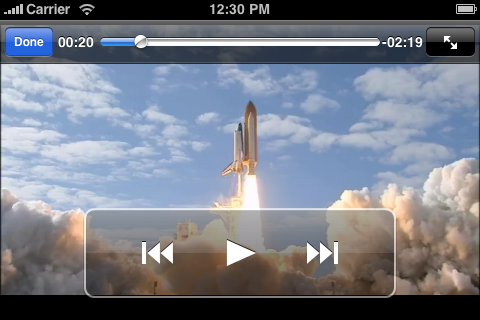Why Video Will Grow Your Online Business

 For content marketers, video is poised to be the “next big thing,” surpassing whitepapers, case studies and even live demonstrations as a “hook” to potential customers. This recent study outlines the trend, but the upshot is that over 90 percent of potential buyers prefer video over other sources of content or other offers.
For content marketers, video is poised to be the “next big thing,” surpassing whitepapers, case studies and even live demonstrations as a “hook” to potential customers. This recent study outlines the trend, but the upshot is that over 90 percent of potential buyers prefer video over other sources of content or other offers.
Why video? Because video makes content seem more human, and therefore more appealing to, well, other humans, said Susan Weinschenk, Ph.D. Dr. Weinschenk, known as “The Brain Lady,” is a leading speaker, author and consultant to brands like Amazon, Disney, Walmart and South By Southwest because of her deep understanding of the psychology of customers and why they do (or buy) what they do.
She has uncovered four core, very human reasons why we’re so drawn to video:
1: Our brains are hard-wired to pay attention to faces – There’s an area of the brain called the Fusiform Facial area which hard-wires us to use the human face as a gathering point for information and believability.
2: A speaker’s voice conveys rich information – the human voice helps to converting information into meaningful content through inflection, tone, volume, and speech pattern, and can make content seem more trustworthy.
3: Emotions are contagious – “…here’s a subtle but powerful aspect that we may take for granted: The body language of emotions is appealing, and we naturally love to share,” Weinschenk said.
4: Movement grabs attention –Since the stone age, Dr. Weinschenk said, our species has survived by noticing and reacting to things in motion.
Now that you understand the “Why,” let’s talk about the “How” – how to use this information in your marketing strategy. You don’t need to contract with an expensive video production company, or add personnel to write, direct, shoot and edit video, so don’t worry. You can, however, leverage a few free or inexpensive tools – like Animoto, Bravo Video, or Screencast, for instance, that can help you use video to your advantage.
Still want more proof? Here are five important statistics about online video, from a recent Content Marketing Institute (CMI) survey.
1. Over 85 percent of U.S. Internet users viewed online video content in September 2012 alone.
2. About 46 percent of people surveyed say they’d be more likely to seek out information about a product or service after seeing it in an online video.
3. Video is now the sixth most popular content marketing tactic, as 70 percent of B2B marketers use some form of online video within their overall strategies.
4. YouTube.com averages 4 billion hits each day, and 61 percent of B2B marketers use YouTube to extend the reach of their messaging and brands.
5. On average, mobile viewers watch videos that are three times longer than when they view them on PCs and laptops, and the number of mobile viewers are expected to reach over 54 million by the end of 2012.
Now that you know your potential customers prefer a video to a whitepaper, for example, the trick is to make video media easily accessible and fast. That’s where the cloud becomes an invaluable resource. As Kent Roberts and Richard Norwood point out in a blog post for Superb.net, the cloud gives you a quality, reliable media hosting solution in a cost-effective manner.
“It’s a more scalable system because you’re patched into a network of servers– increasing bandwidth is greatly simplified. In fact, some higher-end cloud hosting options will give you limitless storage and bandwidth — allowing you to grow and scale your site without having to stop and reorganize,” they said.
In addition, since the cloud is so scalable and flexible, you can adjust your bandwidth usage to meet your exact needs.
And, some cloud providers offer video storage along with a Content Delivery Network or Content Distribution Network (CDN) to help accelerate web performance – including streaming video.
A CDN is a number of highly optimized web servers located around the globe, explains Joost de Valk in an article posted at Yoast.com. CDNs can benefit any heavily-trafficked sites, regardless of topic, including sites that include streaming video. CDNs work by distributing static data to geographically disperse servers worldwide. When users access the site, the static content on your site will be delivered from the server that’s closest to the user’s physical location, which in turn leads to huge performance improvements for sites that have visitors from all across the world, de Valk said.
And CDNs save money for all of the organizations that deploy them, since a CDN offloads the traffic served directly from the origin infrastructure. In addition, CDNs provide a degree of protection from denial-of-service (DoS) attacks by using their large, distributed server infrastructure to absorb the attack traffic.
The Yahoo! Developer Network’s Exceptional Performance Team has some tips for anyone looking to implement a CDN to enhance performance.
Armed with this knowledge, you’ll be able to integrate video as a key part of your content marketing strategy.
Sharon Florentine is a freelance writer who covers everything from holistic veterinary care to data center technology and occasionally blogs for cloud provider Rackspace Hosting.
